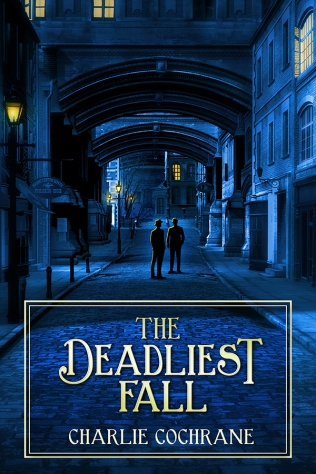
This title may be purchased from Amazon
Some truths can’t be left buried.
The second world war may be over, but for Leslie Cadmore the scars remain. His beloved dog died, there’s a rift between him and his lover Patrick, and his father inexplicably abandoned the family for life in a monastery. Fate’s been cruel.
A chance meeting with Patrick’s sister stirs old memories, and Leslie starts to dig into both his father’s motives and long-unanswered questions around the death of Fergus Jackson. The worst of a group of disreputable pre-war friends, Fergus was a manipulative rake who allegedly fell on his own knife in a training accident. An accident for which Patrick was apparently the only witness.
Leslie’s persuaded to meet Patrick again, and the pair easily fall back into their old dynamic. They uncover connection after surprising connection between their hedonistic old friends and not only Fergus’s murder, but Mr. Cadmore’s abrupt departure. As their investigation deepens, Leslie and Patrick’s bond deepens too. But no reconciliation can occur until Leslie knows for sure that his erstwhile lover wasn’t Fergus’s killer.
Rating: C
The Deadliest Fall is a standalone cozy mystery set shortly after World War II, in which two former lovers, Leslie and Patrick, come together again while working to find out the truth behind the murder, some years earlier, of a mutual acquaintance.
There are two different story threads here. One is the suspicious death, during a training exercise during the war, of the manipulative and debauched Fergus jackson – who was widely known among their set for being a total bastard, taking drugs and shagging anything in trousers – and the other is Leslie trying to find out the truth about his father’s retreat, a few years earlier, into the monastic life. Both storylines are interesting, but the pacing is extremely slow and the book is very ‘talky’ – everyone explores and explains everything to death, and, especially in the early stages, the dialogue is very much of the ‘as-you-know-Bob’ variety. The set up – one of Leslie’s acquaintances visits Leslie’s mother and gets her thinking about Fergus’ death (and this is a few years after it happened) which starts her and her son thinking and talking about it – feels very contrived, and it’s extremely frustrating when some characters ‘in the know’ about certain elements of the story and plot refuse to talk about it because they promised someone else they wouldn’t. Keeping promises is all very well – here, it just feels like a way of making sure Leslie doesn’t find things out too quickly.
The story is all told in Leslie’s PoV, so Patrick is really a peripheral character, and I never really bought the reasons for the fight that estranged them. They’d been a couple for years, but didn’t attempt to repair their relationship after the argument? And for over half the book, Leslie suspects Patrick may have killed Fergus, for reasons that are fairly tenuous – I just didn’t buy it.
The author does a very good job with the period feel, with period appropriate language and attitudes, but that’s really the best thing about it. The characters – with the possible exception of Abbot Barnabas – are all two-dimensional, and having such a large group of suspects, most of whom never appear on the page, made for confusion.
The book blurb makes mention of Leslie and Patrick’s bond “deepening”, but honestly, blink and you’ll miss it. There’s a little bit of flirting but there’s no chemistry there. I know this is a mystery rather than a romance, but the synopsis implies the reparation of a damaged relationship and that just doesn’t happen.
In the end, I enjoyed the mysteries themselves, but didn’t particularly care for the execution or the characters.

